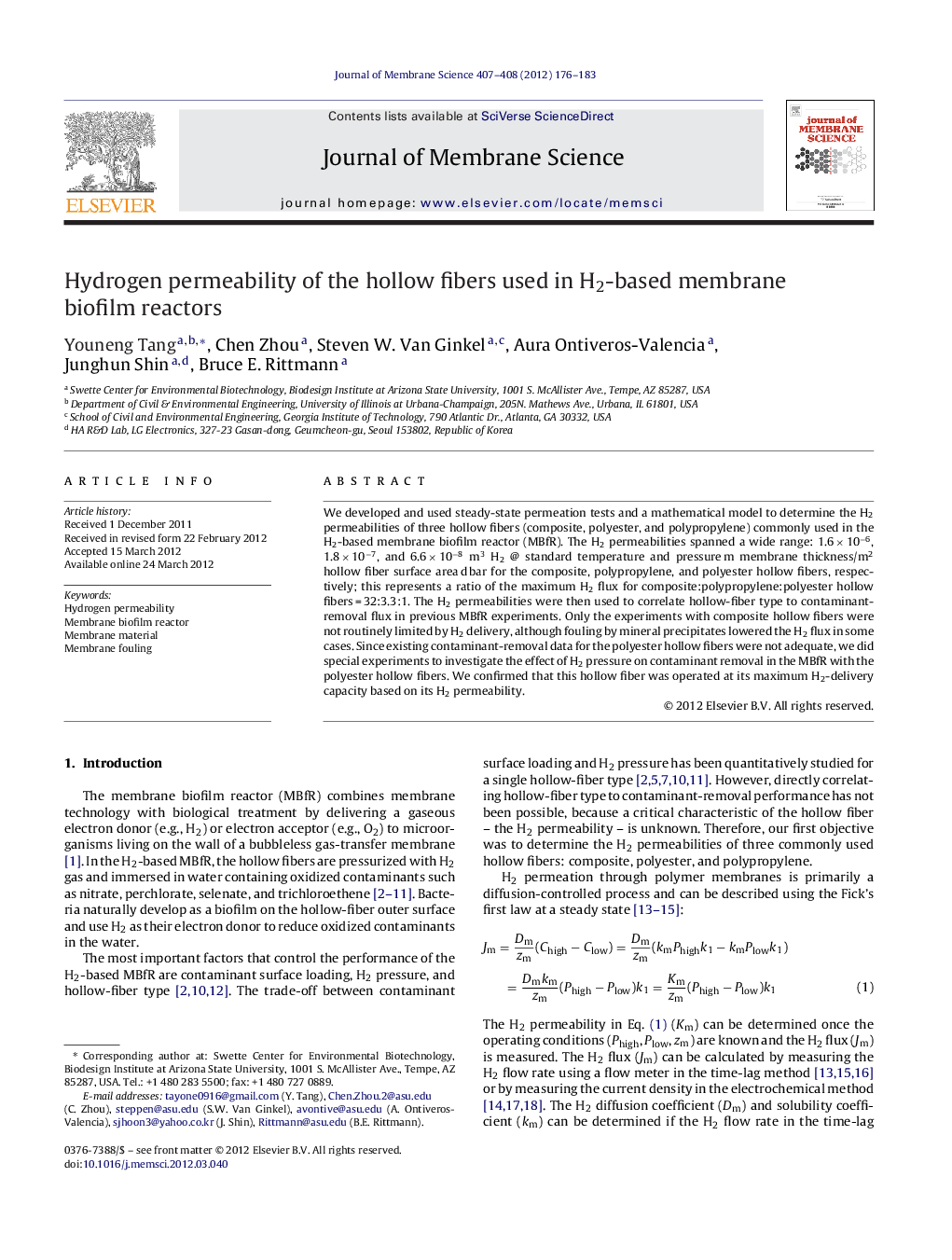| Article ID | Journal | Published Year | Pages | File Type |
|---|---|---|---|---|
| 634974 | Journal of Membrane Science | 2012 | 8 Pages |
We developed and used steady-state permeation tests and a mathematical model to determine the H2 permeabilities of three hollow fibers (composite, polyester, and polypropylene) commonly used in the H2-based membrane biofilm reactor (MBfR). The H2 permeabilities spanned a wide range: 1.6 × 10−6, 1.8 × 10−7, and 6.6 × 10−8 m3 H2 @ standard temperature and pressure m membrane thickness/m2 hollow fiber surface area d bar for the composite, polypropylene, and polyester hollow fibers, respectively; this represents a ratio of the maximum H2 flux for composite:polypropylene:polyester hollow fibers = 32:3.3:1. The H2 permeabilities were then used to correlate hollow-fiber type to contaminant-removal flux in previous MBfR experiments. Only the experiments with composite hollow fibers were not routinely limited by H2 delivery, although fouling by mineral precipitates lowered the H2 flux in some cases. Since existing contaminant-removal data for the polyester hollow fibers were not adequate, we did special experiments to investigate the effect of H2 pressure on contaminant removal in the MBfR with the polyester hollow fibers. We confirmed that this hollow fiber was operated at its maximum H2-delivery capacity based on its H2 permeability.
► Developed a new method to determine the H2 permeabilities of hollow fibers. ► Determined the H2 permeabilities for composite, polyester, and polypropylene fibers. ► Correlated fiber type to contaminant removal in H2-based membrane biofilm reactors. ► Identified that the composite fiber is more susceptible to fouling by precipitates.
